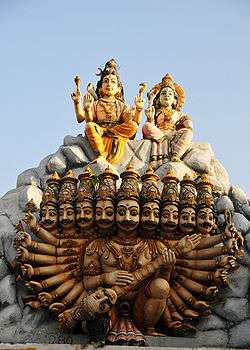Ramayana is not just about the killing of an Asura but trying and converting him back to his origin.
According to Hindu thought everything, even what seems to be ugly and wicked has an ultimate divine origin. The ugliness and distortions are crusts that have been added as the energies and forces released by the Divine have strayed from their straight path and rolled in the mud of earth nature still in the grip of the Inconscient darkness into which creation had plunged.
An Asura is therefore someone who has not only completely forgotten his divine origin but revolts against all that is beautiful and divine. He is driven by the impetus of the shadow that lies a the back of every human being and hence his steps are retrogressive so to say.
 But the way for man is to look up and look forward. The deva type of humanity is engaged in the forward march. Ravana represents the retrogressive movement in nature. He wants to undo what has been done through the centuries by the seers and sages. He wants to sow seeds of an aggressive and ambitious type of humanity whose focus is material and technological advancement at the expense of the spiritual side. His idea of liberty is licentiousness typified in the story of his sister Suparnakha and his own life led by lust and blind impulses. He cannot accept dharma since it means effort at self-mastery. He rather prefers to be driven by every impulse to satisfy his desire for selfish gains and personal pleasure.
But the way for man is to look up and look forward. The deva type of humanity is engaged in the forward march. Ravana represents the retrogressive movement in nature. He wants to undo what has been done through the centuries by the seers and sages. He wants to sow seeds of an aggressive and ambitious type of humanity whose focus is material and technological advancement at the expense of the spiritual side. His idea of liberty is licentiousness typified in the story of his sister Suparnakha and his own life led by lust and blind impulses. He cannot accept dharma since it means effort at self-mastery. He rather prefers to be driven by every impulse to satisfy his desire for selfish gains and personal pleasure.
And yet even Asura is an angel who has strayed from his true path. The Lord remembers and hence he assumes a earthly body to redeem and restore him to his divine origins which he has forgotten completely. It is this sublime love that leans down to rescue and redeem what is fallen and disturbed and distorted and release the divinity in it that we find in the Ramayana (and also at another level in the Mahabharata).



